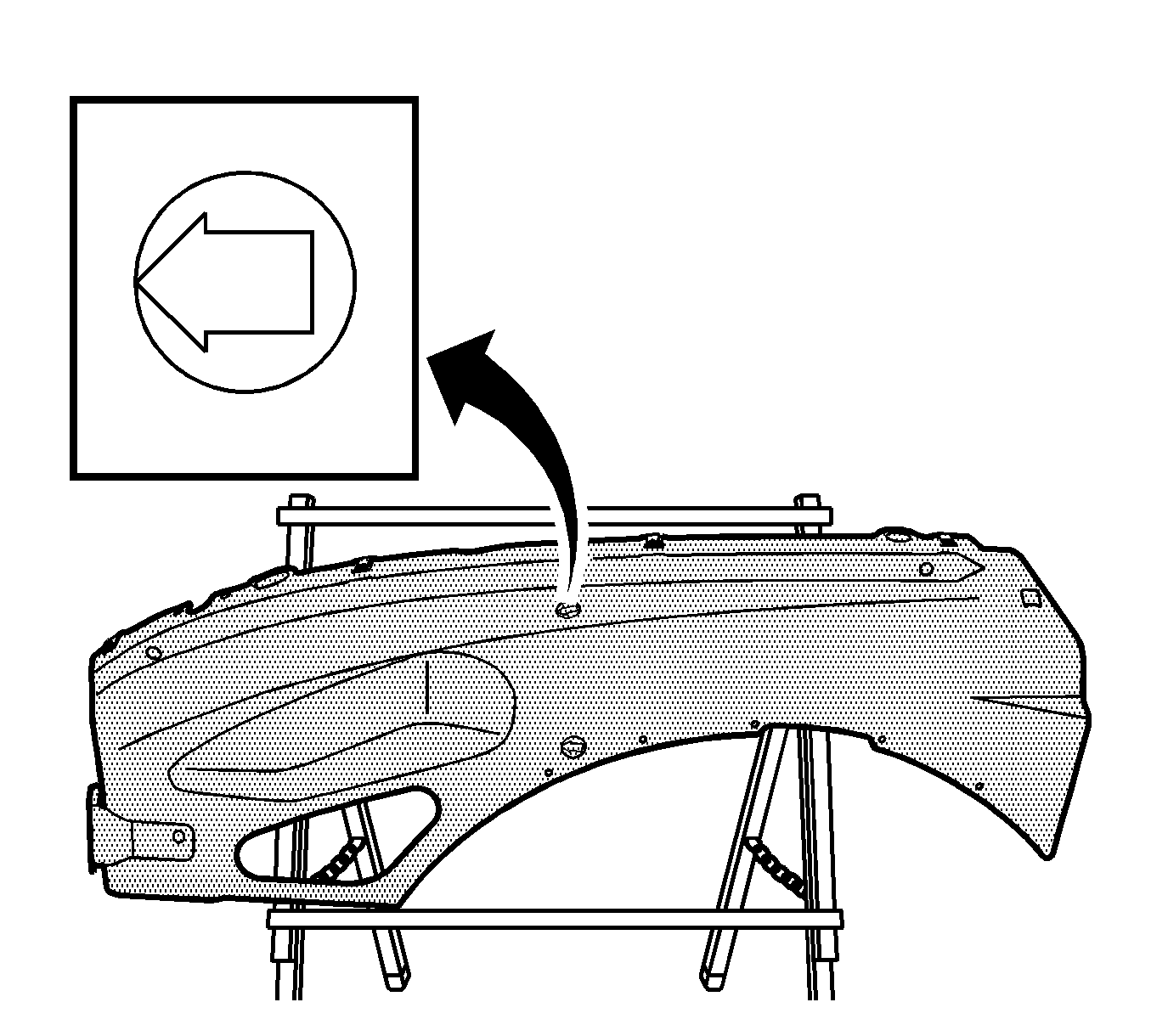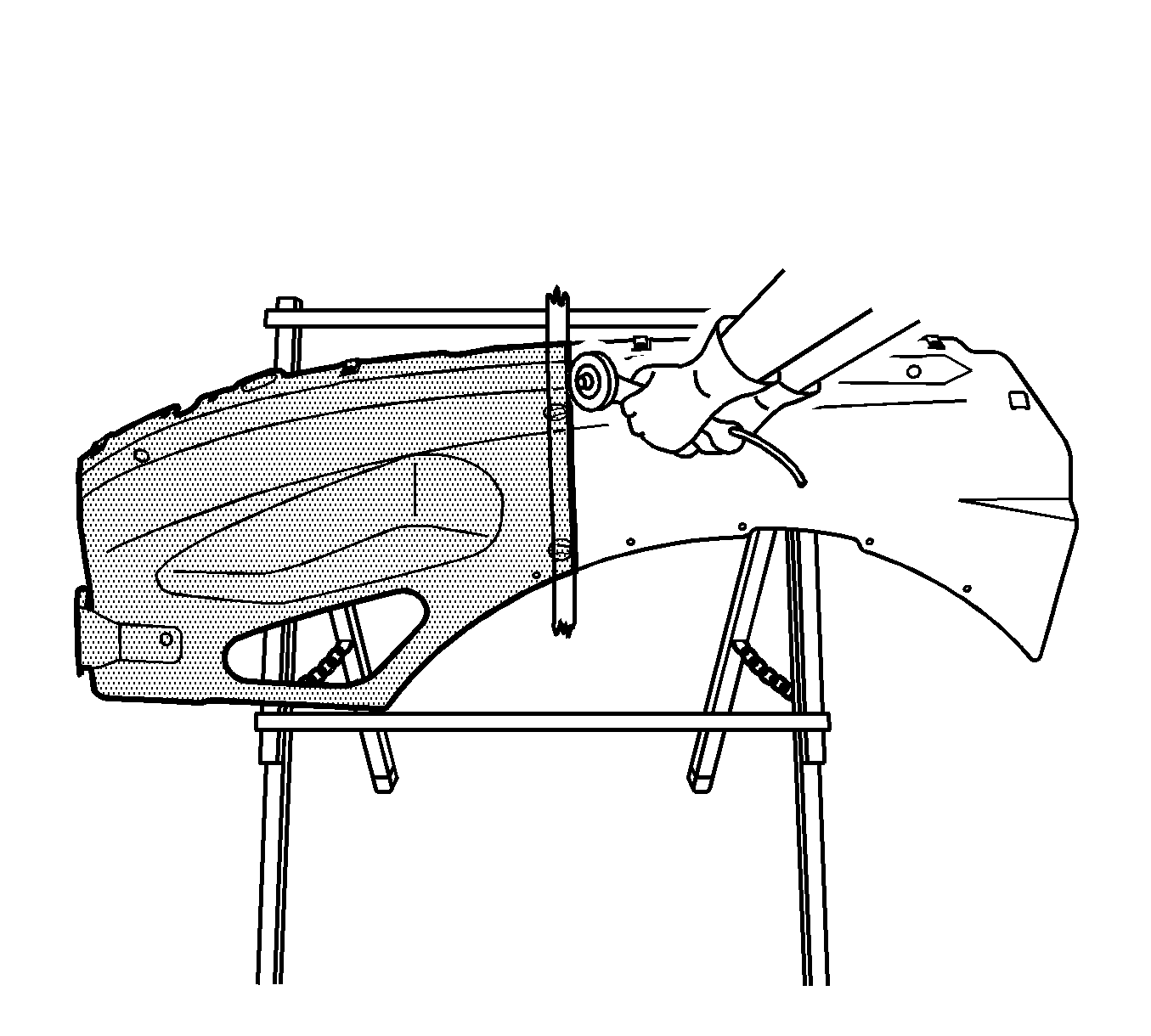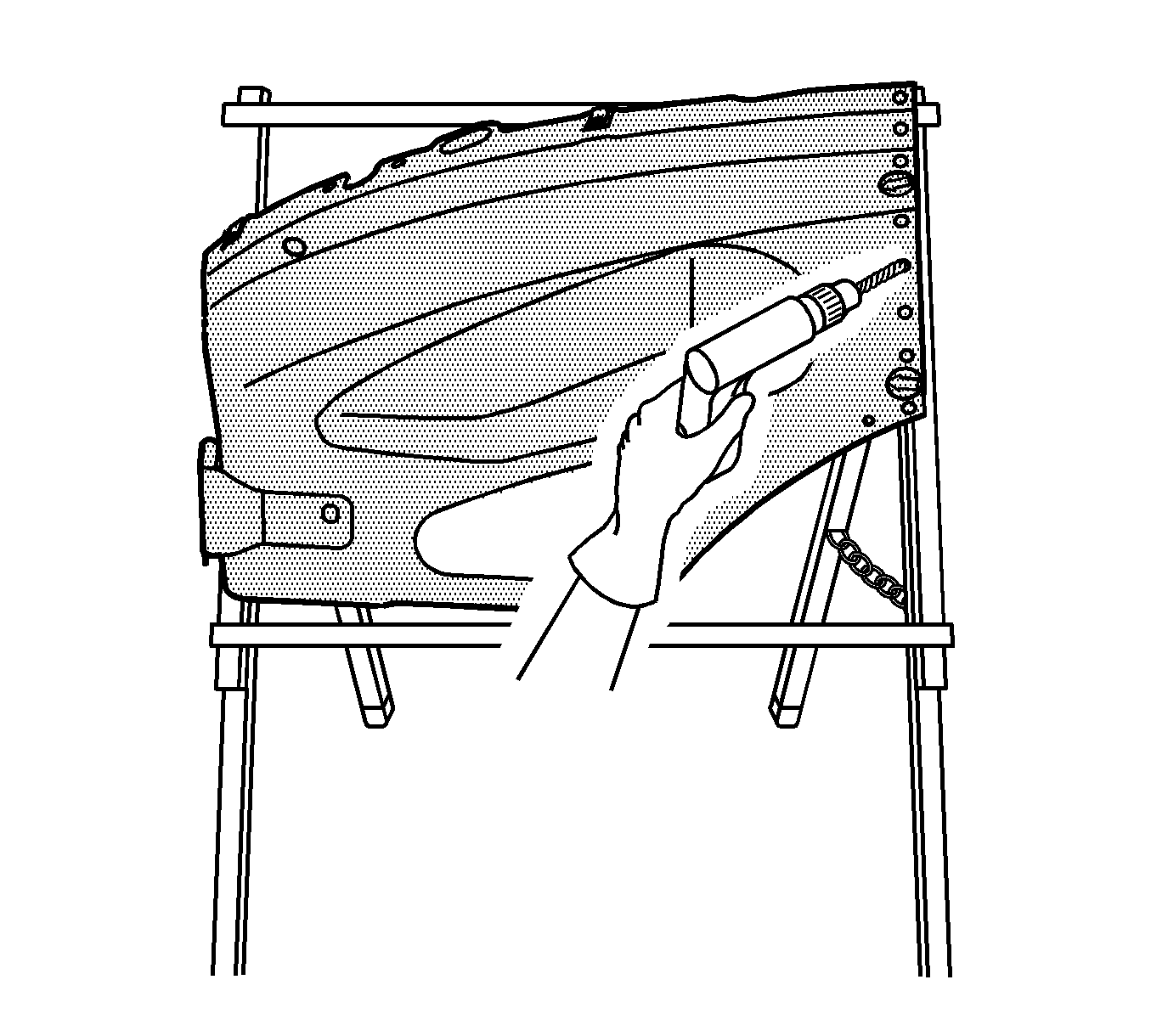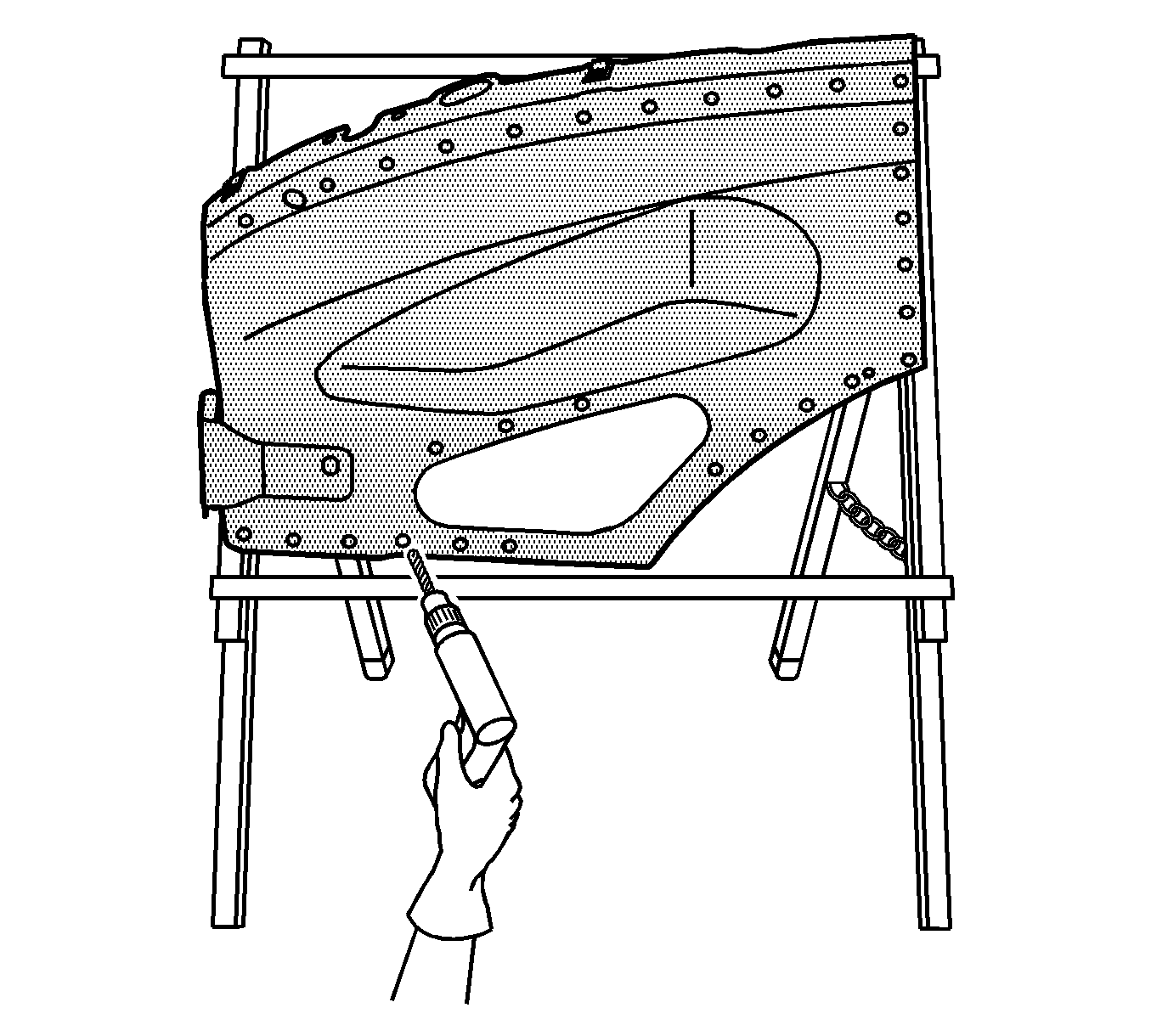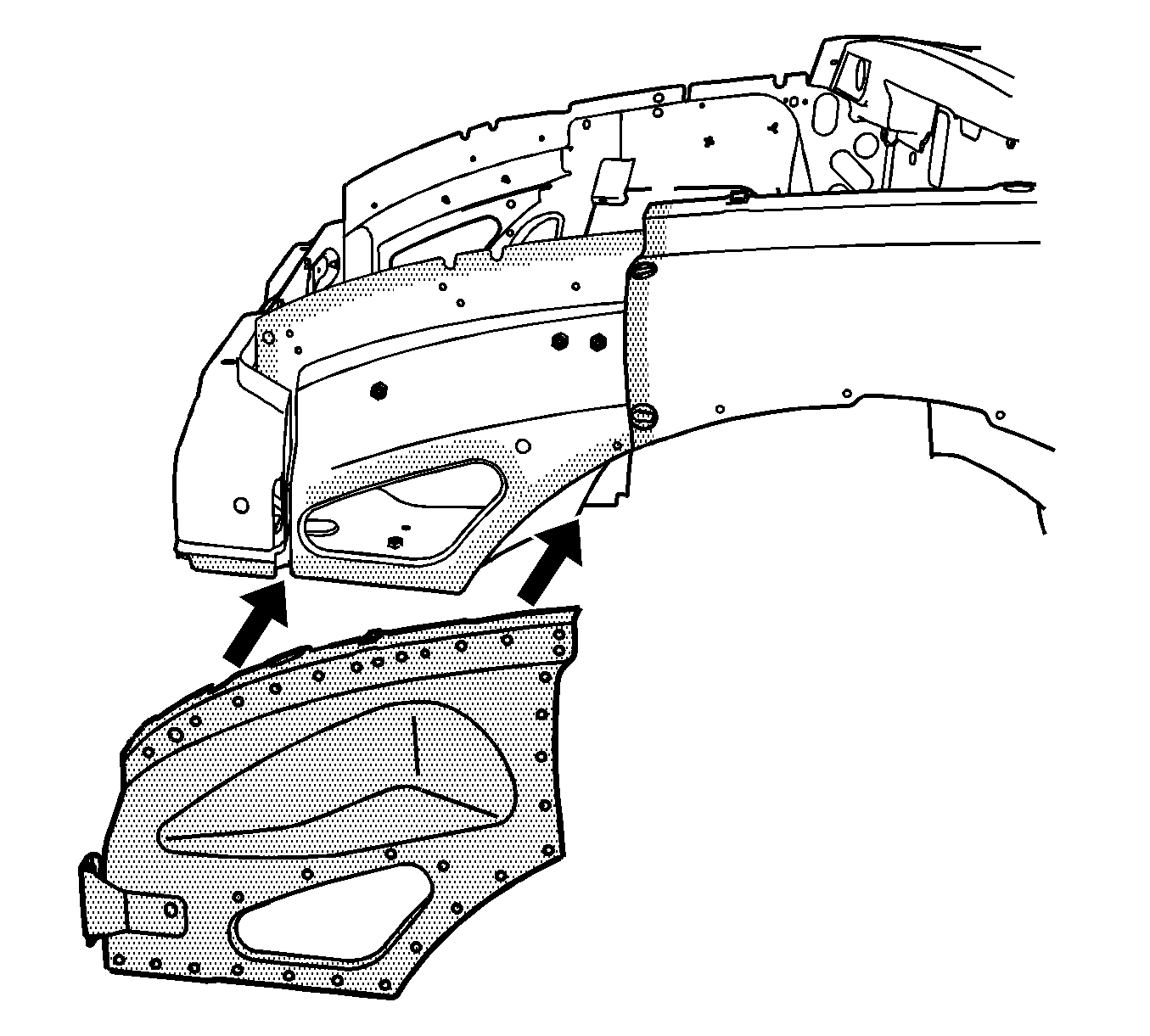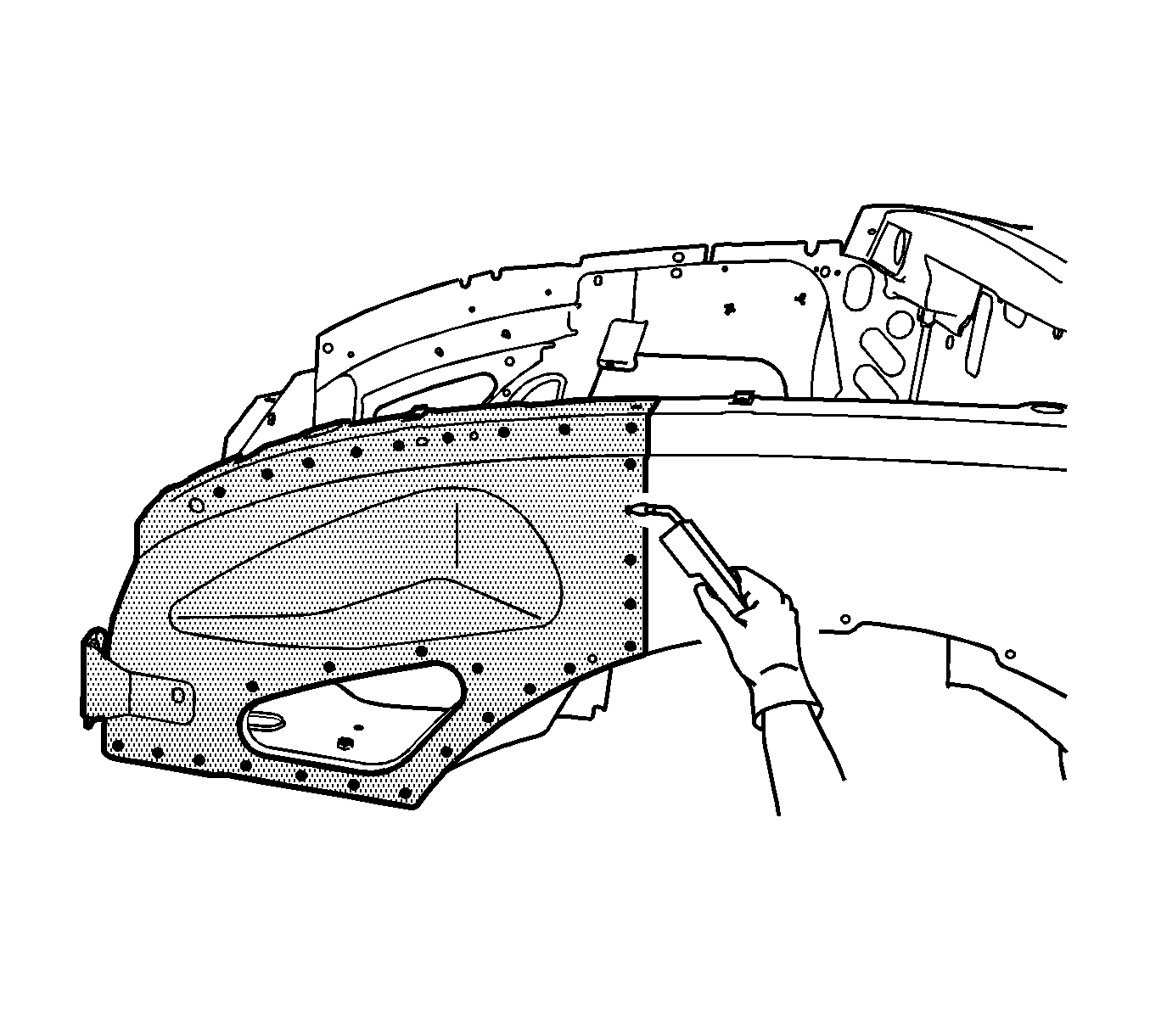For 1990-2009 cars only
Removal Procedure
- Disable the SIR system. Refer to SIR Disabling and Enabling in SIR.
- Disconnect the negative battery cable. Refer to Battery Negative Cable Disconnection and Connection in Engine Electrical.
- Remove all related panels and components.
- Repair as much of the damage as possible to factory specifications. Refer to Motor Compartment in Dimensions - Body .
- Note the location and remove the sealers and anti-corrosion materials from the repair area, as necessary. Refer to Anti-Corrosion Treatment and Repair in Paint and Coatings.
- Locate the 2 die marks on the upper fender rail.
- Apply masking tape over the die marks and around both sides of the upper fender rail.
- Cut the upper fender rail along the front edge of the tape using a cut-off wheel or equivalent.
- Locate and drill out all factory welds in front of the sectioning location. Note the number and location of the welds for installation of the replacement fender rail section.
- Verify the existence of structural weld-through adhesive. Refer to Structure Adhesive Identification . If necessary use a chisel to separate the upper fender rail section from the adjacent panels.
- Remove the upper fender rail section.
- Remove the masking tape and grind to bare metal a 25 mm (1 in) strip at the sectioning location.
Caution: Refer to Approved Equipment for Collision Repair Caution in the Preface section.
Important: Sectioning procedures have been developed to simplify the repair of the upper tie-bar. If the damage exceeds the recommended area for sectioning, replace the complete upper fender rail.

Caution: Refer to Foam Sound Deadeners Caution in the Preface section.
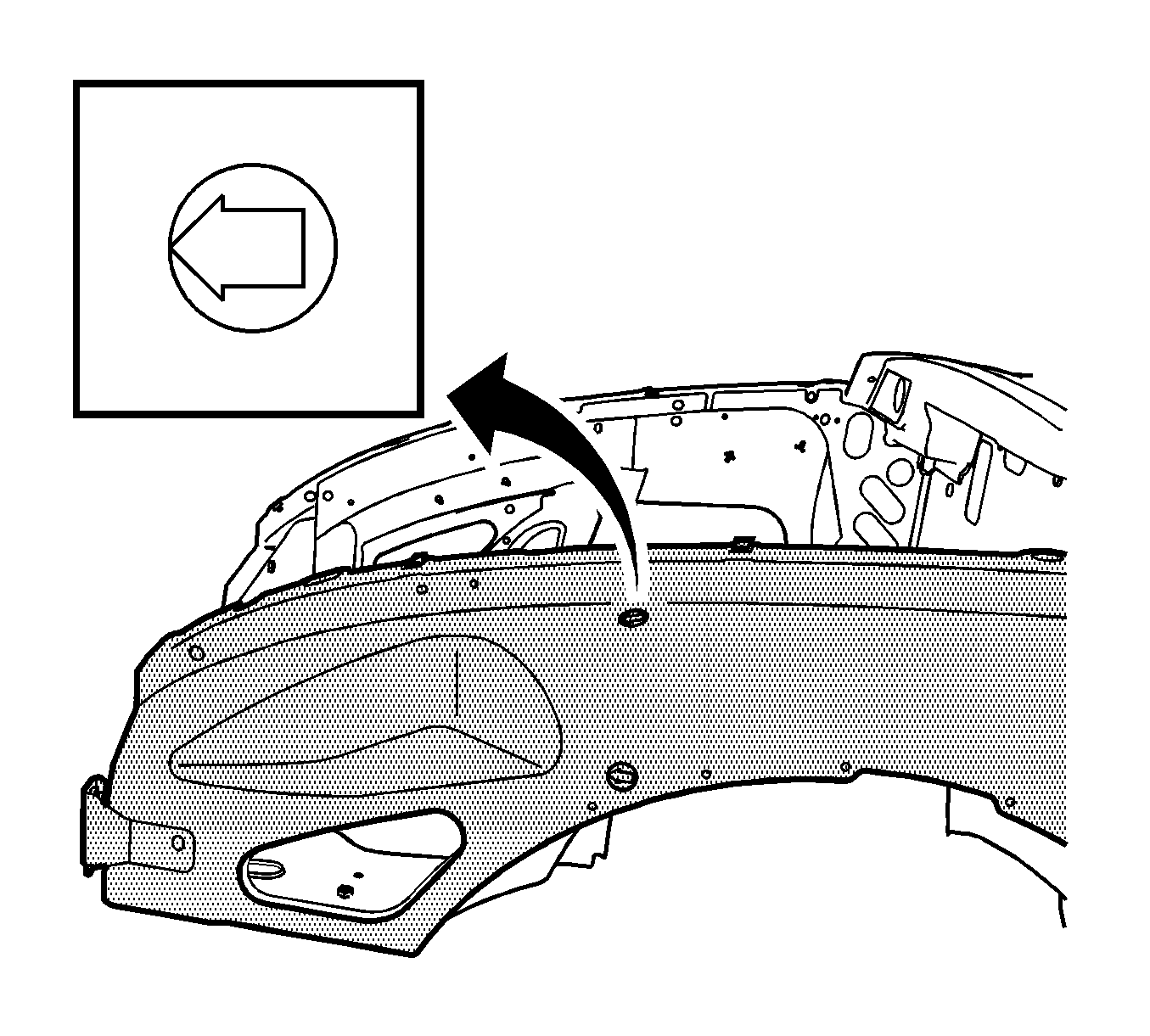
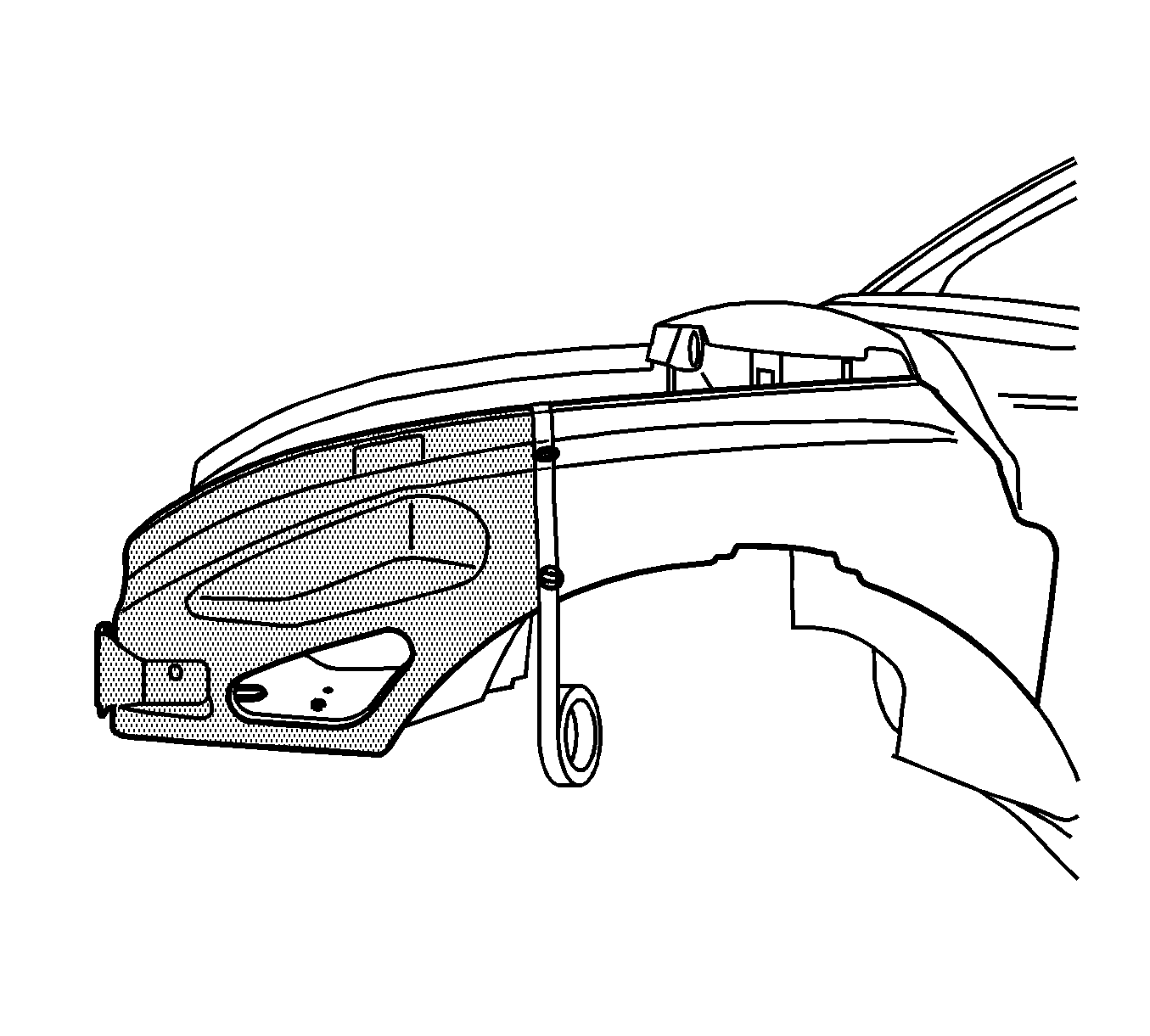
Important: Line up ¾ in masking tape with the point of each die mark arrow as shown.
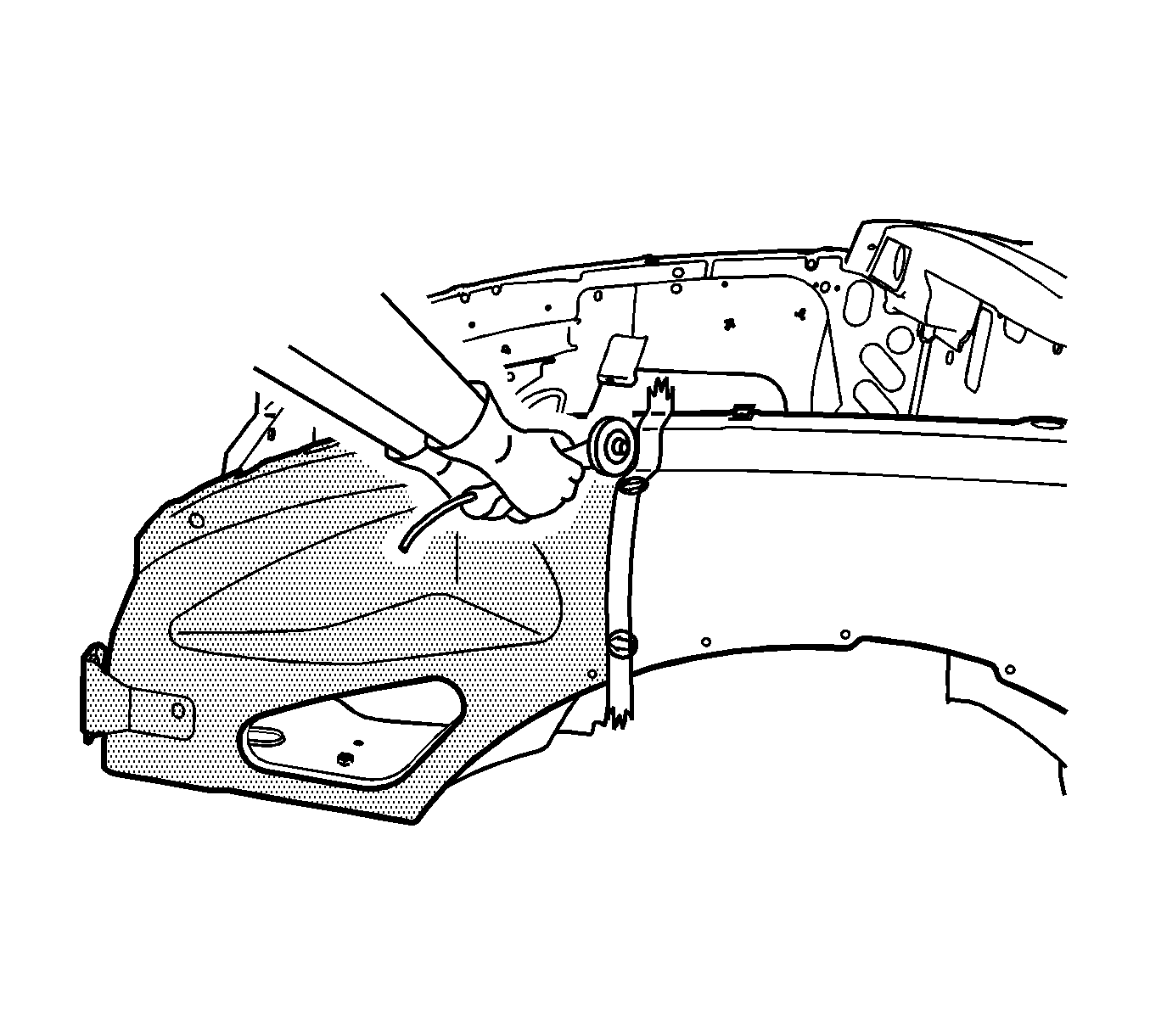
Important: The tape edge facing the front of the vehicle is the proper cut location.
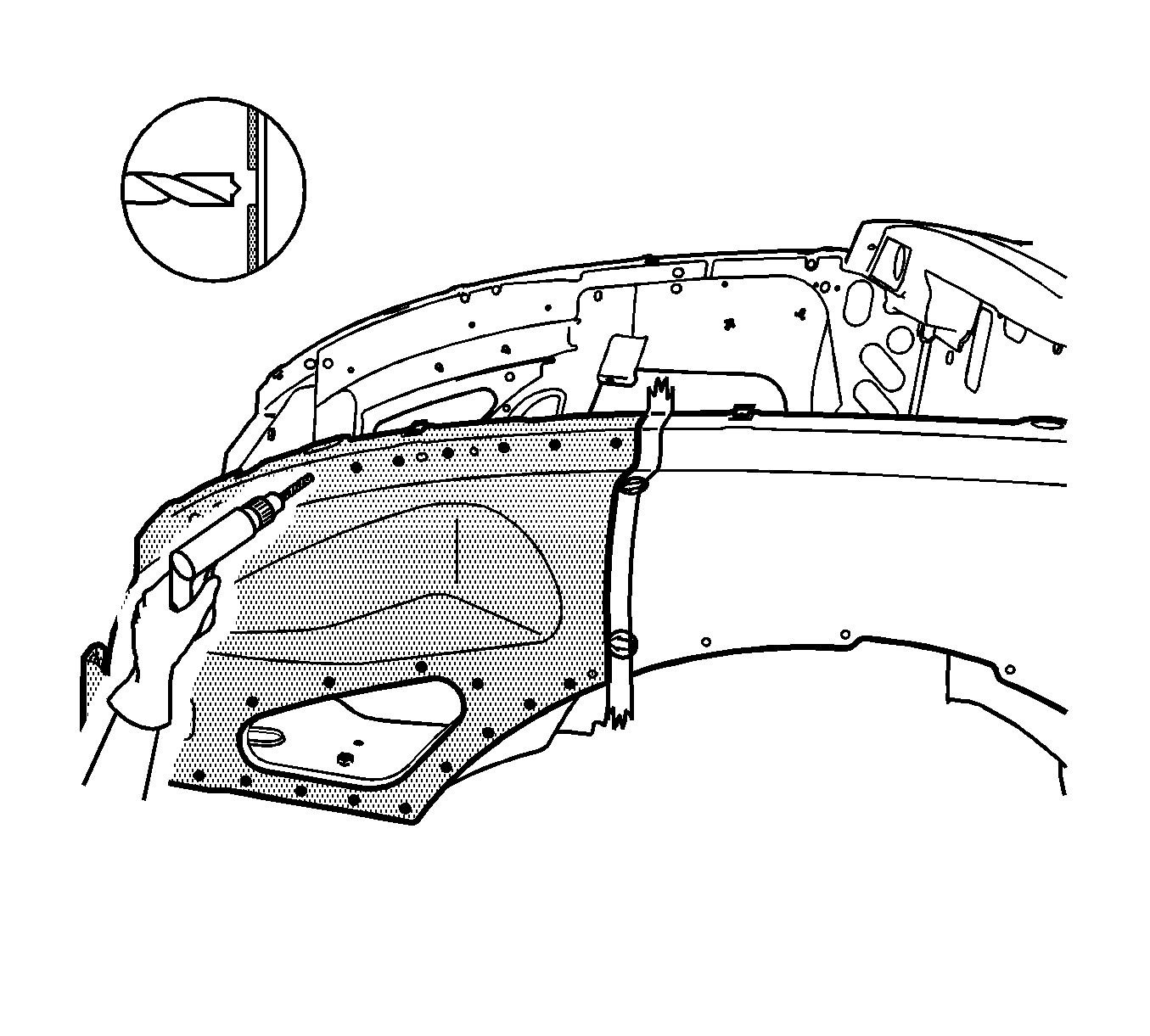
Important: Do NOT damage any inner panels or reinforcements.
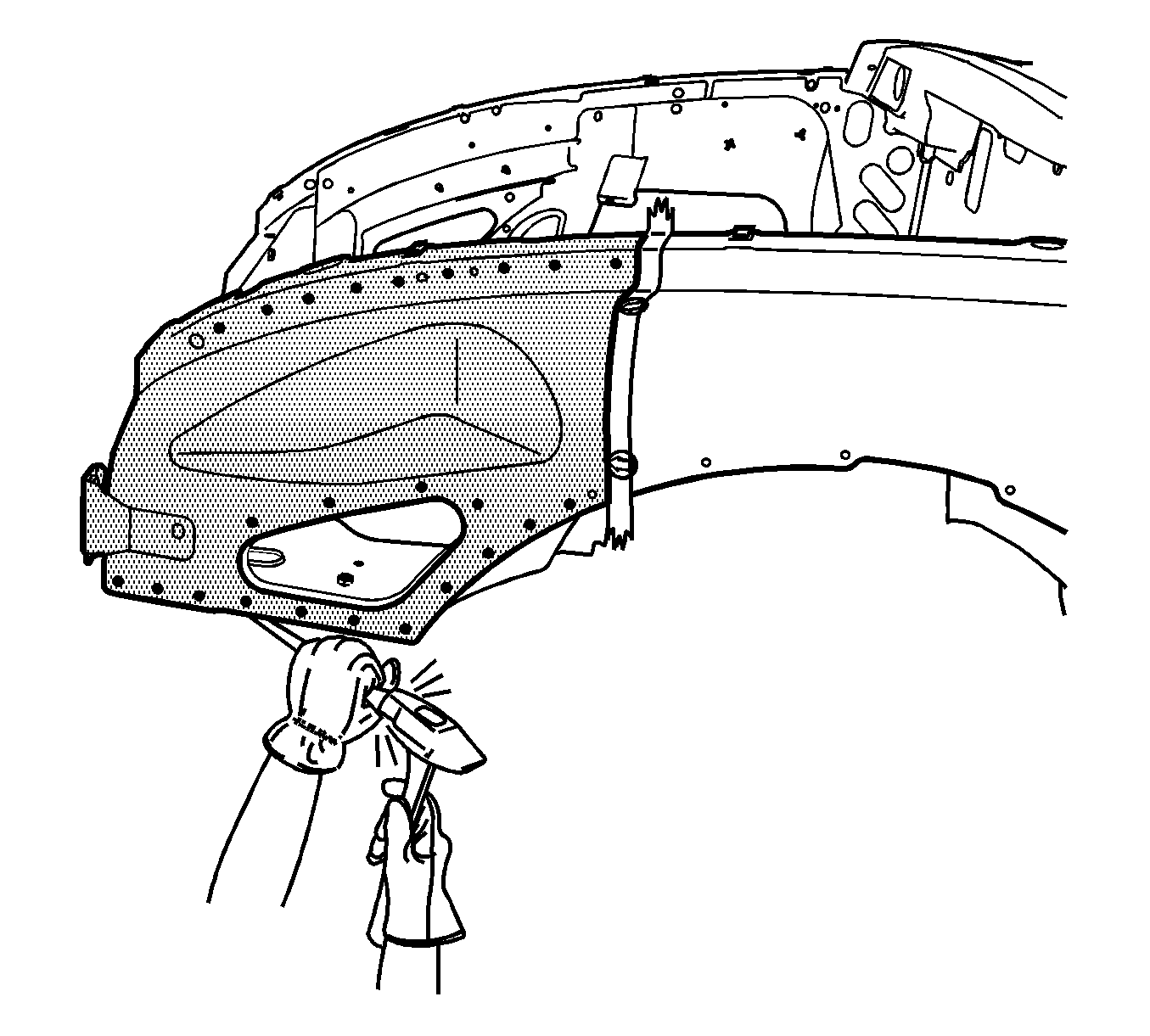
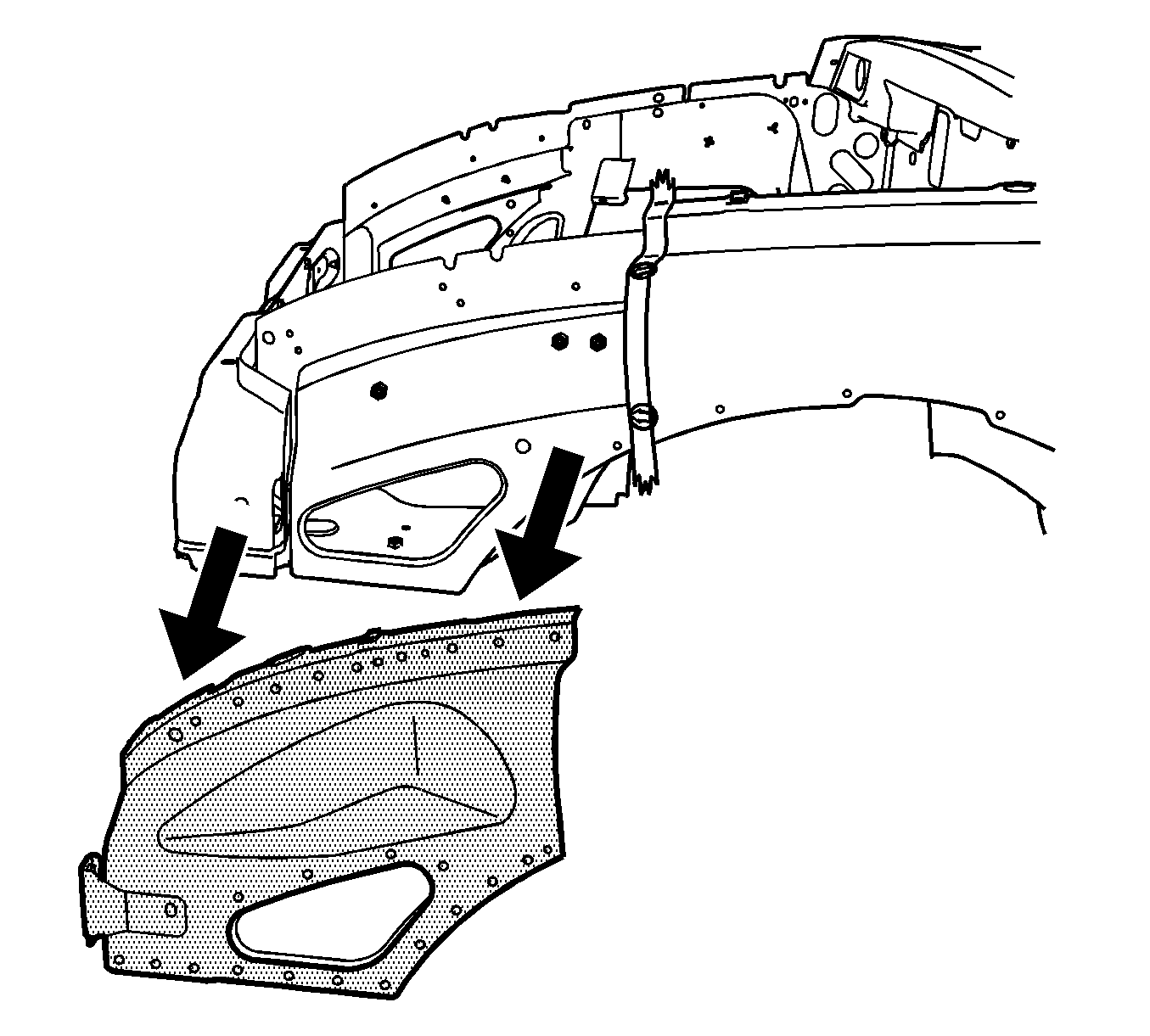
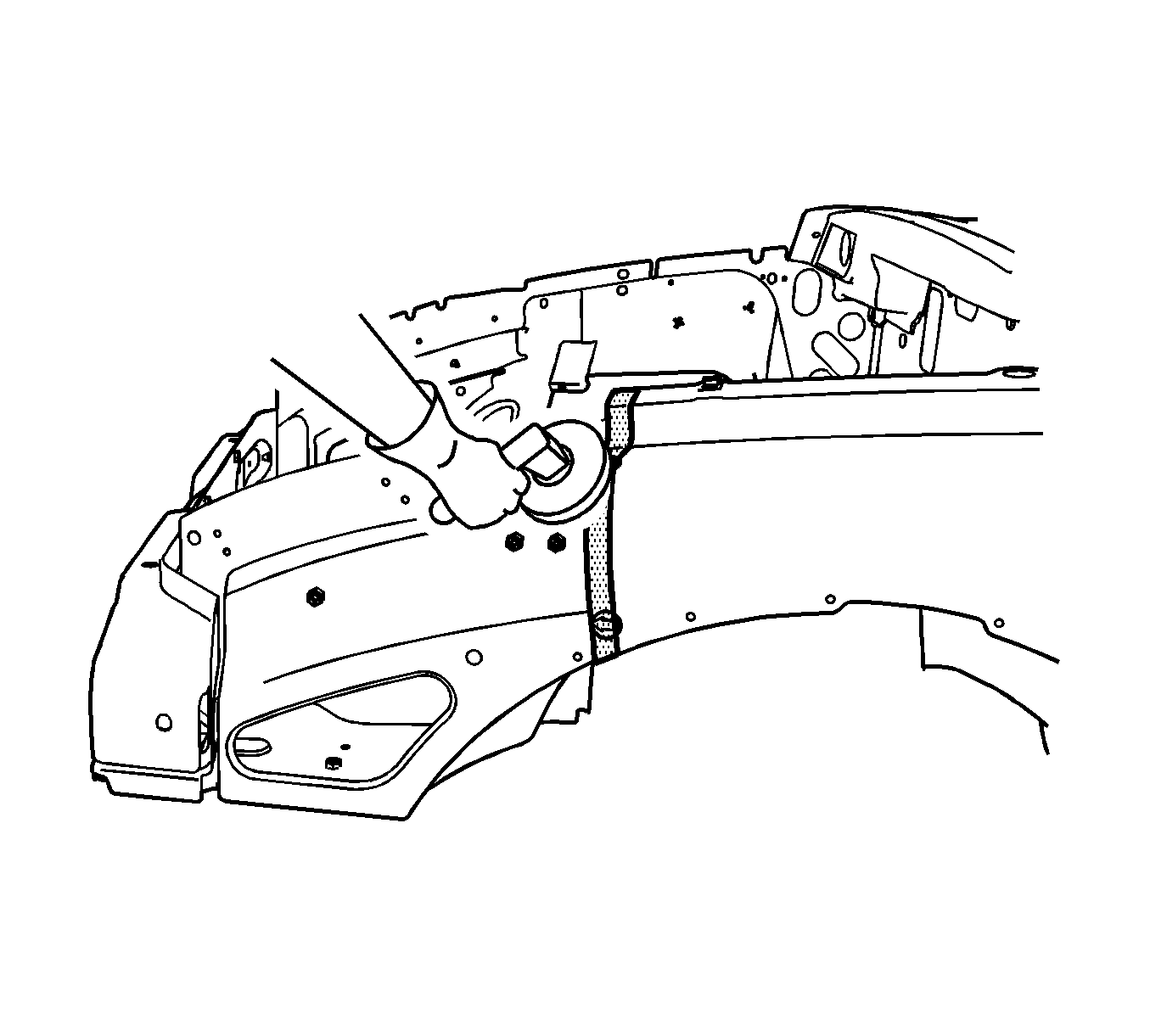
Installation Procedure
- On the service upper fender rail, locate the 2 die marks.
- Apply masking tape along the back of each die-mark arrow as shown in the figure.
- Cut the upper fender rail along the back edge of the tape using a cut-off wheel or equivalent.
- Drill 8 mm (5/16 in) plug weld holes along the sectioning cut. Locate these holes 13 mm (½ in) from the edge and spaced approximately 26 mm (1 in) apart.
- Drill 8 mm (5/16 in) plug weld holes in the service part as necessary in locations noted from the original panel.
- Replace the structural adhesive with an additional plug weld between the existing plug welds, where necessary.
- Prepare all mating surfaces as necessary.
- Apply 3M® Weld-Thru coating P/N 05916 or equivalent to all mating surfaces
- Position the upper fender rail section. Refer to Motor Compartment section in Dimensions - Body .
- Plug weld accordingly.
- Clean and prepare all welded surfaces.
- Apply the sealers and anti-corrosion materials to the repair area, as necessary. Refer to Anti-Corrosion Treatment and Repair in Paint and Coatings.
- Paint the repair area. Refer to Basecoat/Clearcoat Paint Systems in Paint and Coatings.
- Install all related panels and components.
- Connect the negative battery cable. Refer to Battery Negative Cable Disconnection and Connection in Engine Electrical.
- Enable the SIR system. Refer to SIR Disabling and Enabling in SIR.
